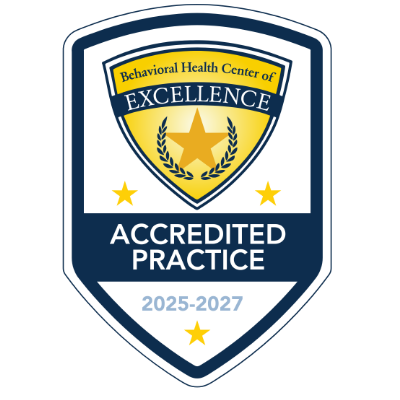Autism Spectrum Disorder (ASD) refers to a range of complex developmental disabilities that affect the functioning of the brain, impacting social interactions, communication and behavior. These characteristics can present themselves in a wide variety of combinations and varying levels and may include:
Difficulty relating to others
Minimal eye contact
Problems adapting to changes in routines
Repetitive patterns of behavior
Sensitivity to sensory stimuli
Obsession with a specific interest
Some children may have delayed communication skills, while children on the higher functioning end of the spectrum may have trouble with the social aspects of communication.
The Center for Disease Control estimates that 1 in 59 children are now affected by autism spectrum disorders, the cause of which is unknown. But research has shown that early intervention can result in significant communication and social improvements. Activities that promote interaction with peers are important for social progress. Using strategies such as visual supports can help children express their needs and manage their behavior. Families working together with professionals can develop a plan to meet the needs of their child.
Autism spectrum disorders may qualify children for special education services if it is impacting their education. If so, school professionals can work with families to develop supports through the IEP (Individualized Education Plan) process. Before age three, children can be served through their state’s early intervention agency, such as Tennessee’s Early Intervention System.
Interested in learning more about Autism Spectrum Disorders?
These popular books (and hundreds of others) are available to you from our Siskin Lending Library:
General:
Ten Things Every Child With Autism Wishes You Knew (Notbohm)
1001 Great Ideas for Teaching and Raising Children with Autism Spectrum Disorders (Notbohm)
Thinking in Pictures, The Way I See It or The Autistic Brain (Grandin)
Autism Spectrum Disorder: The Complete Guide to Understanding Autism (Sicile-Kira)
An Early Start for Your Child with Autism (Rogers)
Engaging Autism (Greenspan)
A Parent’s Guide to High-Functioning Autism Spectrum Disorder (Ozonoff)
Uniquely Human (Prizant)
The Reason I Jump (Higashida)
Overcoming Autism (Koegel)
High-Functioning autism and Difficult Moments (Myles)
Communication, Social Skills:
More Than Words: A Guide to Helping Parents Promote Communication and Social Skills in Children with Autism Spectrum Disorders ( Sussman)
The Social Skills Picture Book (Baker)
The New Social Story Book (Gray)
The Asperkid’s Secret Book of Social Rules (O’Toole)
Visual Supports for People with Autism (Cohen, Gerhardt)
Sleep Issues, Toilet Training:
Solving Sleep Problems in Children with Autism Spectrum Disorders (Katz, Malow)
Sleep Better! (Durand)
Toilet Training for Individuals with Autism or Other Developmental Issues (Wheeler)
The Potty Journey (Coucouvanis)
Anxiety, Sensory Issues:
When My Worries Get Too Big: A Relaxation Book for Children… (Dunn Baron)
The Out-of-Sync Child or The Out-of-Sync Child Has Fun (Kranowitz)
For Children:
The Survival Guide for Kids with Autism Spectrum Disorders (and Their Parents) (Verdick, Reeve)
My Brother Charlie (Peete)
My Friend With Autism (Bishop)
Understanding Sam and Asperger Syndrome (Niekerk, Venter)
All My Stripes (Rudolph)
Nathan’s Autistic Spectrum Superpowers (Yarborough)
We would also recommend:
Informative Websites:
Autism Society of America (www.autism-society.org)
Autism Speaks (www.autismspeaks.org): includes the 100 Days kits, valuable resources for families of children newly diagnosed
Center for Disease Control (www.cdc.gov)
Local Resources:
Chattanooga Autism Center (www.chattanoogaautismcenter.org): very active local organization offering trainings, parent support, social events, an annual conference, etc.
Siskin Children’s Institute (www.siskin.org): lists our training events as well as links to autism information





